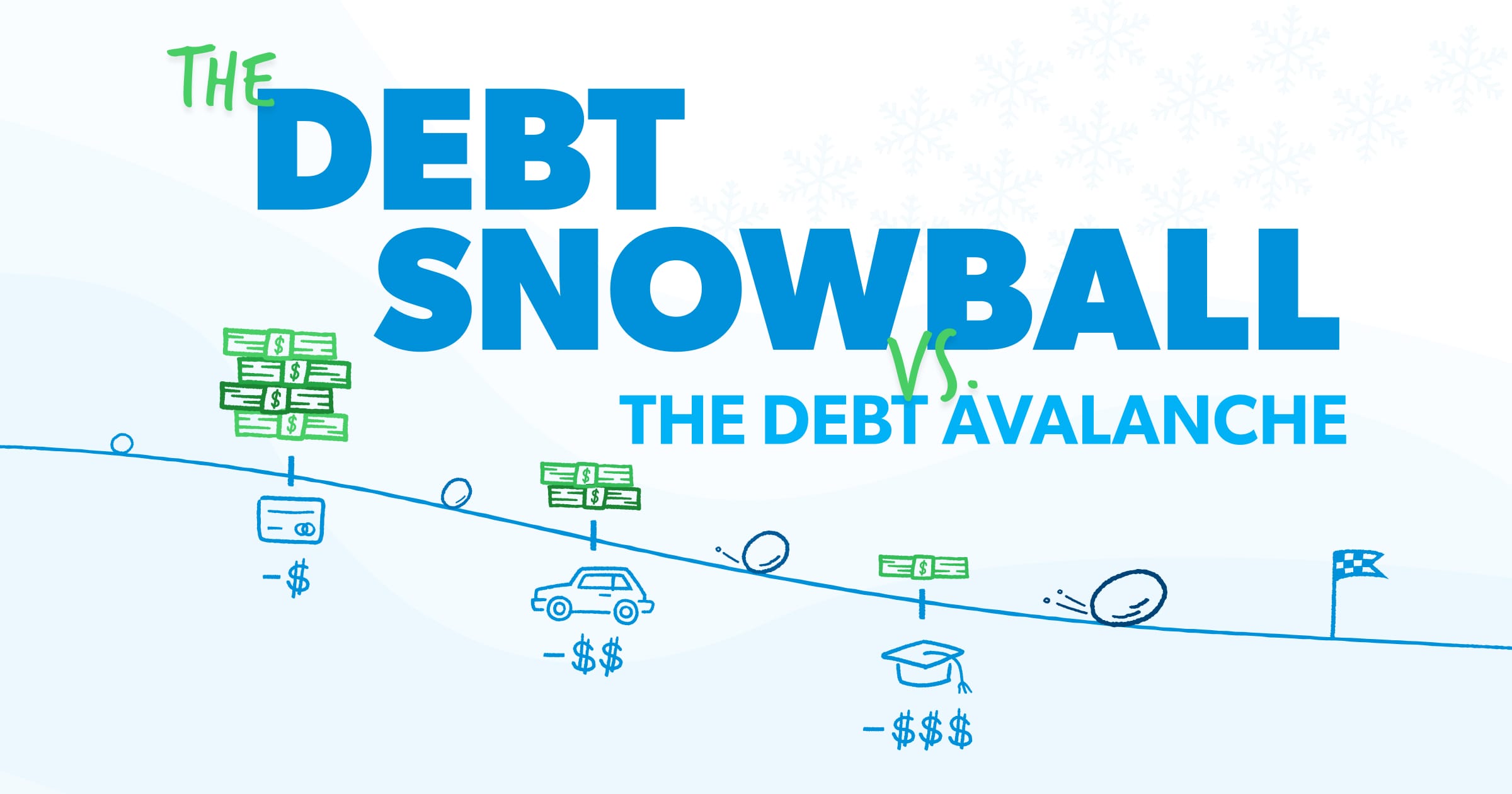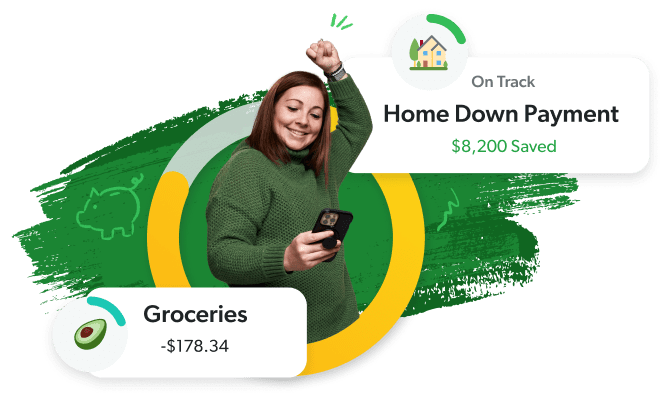Debt Avalanche vs. Debt Snowball: What’s the Difference?
5 Min Read | Jan 22, 2025

Key Takeaways
- The debt avalanche method is a debt-elimination strategy where you pay off your debts in order from highest to lowest interest rate.
- While the debt avalanche method can save you money in interest, you may have to pay your biggest balances first—which can keep you from making progress.
- The debt snowball method is more effective than the debt avalanche method because you pay off the smallest balance first—which gives you the motivation and the momentum to keep going.
When it comes to paying off debt, there are two main strategies people use: the debt avalanche method and the debt snowball method. They sound similar, but they work very differently.
The debt avalanche prioritizes paying off your debts from highest to lowest interest rate, while the debt snowball prioritizes paying off your debts from smallest to biggest balance.
So, which one should you use? Let’s talk about the pros and cons of the snowball vs. avalanche method—and which one will actually help you pay off your debt faster.
What Is the Debt Avalanche Method?
The debt avalanche method (sometimes called debt stacking) is a debt-payoff strategy where you pay off your debts in order from highest to lowest interest rate, regardless of the balance.
So, let’s say you had a credit card balance of $15,000 at 23% interest and a student loan of $10,000 at 5% interest. According to the avalanche method, you would focus on paying off the credit card first before you tackled the student loan.
The goal with the debt avalanche method is to save more money in the long run by getting rid of the debts that are charging you the most in interest. But with this strategy, you might have to pay off your largest balances first. And that can feel super intimidating—especially when you’ve still got other debts to pay off!
How the Debt Avalanche Method Works
Step 1: List all your debts from highest interest rate to lowest interest rate, regardless of the balance (this includes personal loans, student loans, car notes, credit card balances, medical bills—anything you owe, except your mortgage).
Step 2: Attack the debt with the highest interest rate first, while still paying minimum payments on your other debts.
Step 3: Once you pay off the debt with the highest interest rate, attack the debt with the next highest interest rate.
Step 4: Repeat until you’ve paid off all your debts, ending on the debt with the lowest interest rate.
Debt Avalanche Method Example
Okay, so now you know how the debt avalanche works. But let’s look at an example of how the avalanche method would play out in real life.
| Debt Avalanche | |
|---|---|
| Debt Balance | Interest Rate |
| $20,000 Credit Card | 20% |
| $9,000 Personal Loan | 17% |
| $10,000 Student Loan | 5% |
| $16,000 Truck Loan | 4.25% |
| $2,000 Car Loan | 4% |
In this case, you would start by focusing all your energy on paying off the $20,000 credit card because it has the highest interest rate at 20%. Once you paid off the credit card, you’d move on to the personal loan at 17%—using what you were paying toward the credit card. Then so on and so on, all the way down to the $2,000 car loan at 4% interest.
That all makes sense . . . in theory. But is the avalanche method really the best way to get out of debt? Let’s dive into an alternative method to the debt avalanche—the debt snowball—to see which one is more effective.
Debt Snowball vs. Debt Avalanche
With the debt snowball method, you pay off your debt in order from smallest to largest balance, regardless of the interest rate. You attack the smallest debt with everything you’ve got, while making minimum payments on your other debts. When the smallest debt is gone, you move to the next smallest and repeat until you’re debt-free.
Pay off debt fast and save more money with Financial Peace University.
By paying off your smallest debt first (instead of focusing on the interest rate), you get a quick win! Plus, you immediately free up money to tackle the rest of your debt. The debt snowball creates unstoppable momentum to knock out the rest of your debts—like a snowball rolling down a hill!
With the debt avalanche method, you may not get a feeling of accomplishment for a long time. That can cause you to lose steam and give up way before you even pay off your first debt. And that’s no good!
Sure, it might make sense mathematically to begin with the debt that has the highest interest rate, but (let’s get real) if math was the problem, we wouldn’t be in debt in the first place. You need a realistic strategy you can actually stick with.
| Debt Snowball vs. Debt Avalanche | |
|
The Debt Snowball |
The Debt Avalanche |
|
|
|
|
|
|
The debt avalanche and debt snowball have a similar goal: to help you get rid of your debt. But you’re more likely to make it happen with the debt snowball. The motivation it gives you is the secret sauce you need to become debt-free once and for all!
Get Your Debt Snowball Rolling With a Budget
If the debt snowball is the best (and fastest) way to pay off your debt, then it’s time to get yours rolling! And the best way to do that is with a budget.
A budget is simply a plan for your money. You give every single dollar a job to do—whether it’s giving, saving, spending or (in this case) paying off debt. Because when you have a plan and you stick to it, your debt doesn’t stand a chance!
The EveryDollar budgeting app will help you plan your expenses for the month, spend wisely, and save money—so you can actually make a dent in your debt payoff.
Download EveryDollar for free today and take your first step toward debt freedom!
Save more. Spend better. Budget confidently.
Get EveryDollar: the free app that makes creating—and keeping—a budget simple. (Yes, please.)



